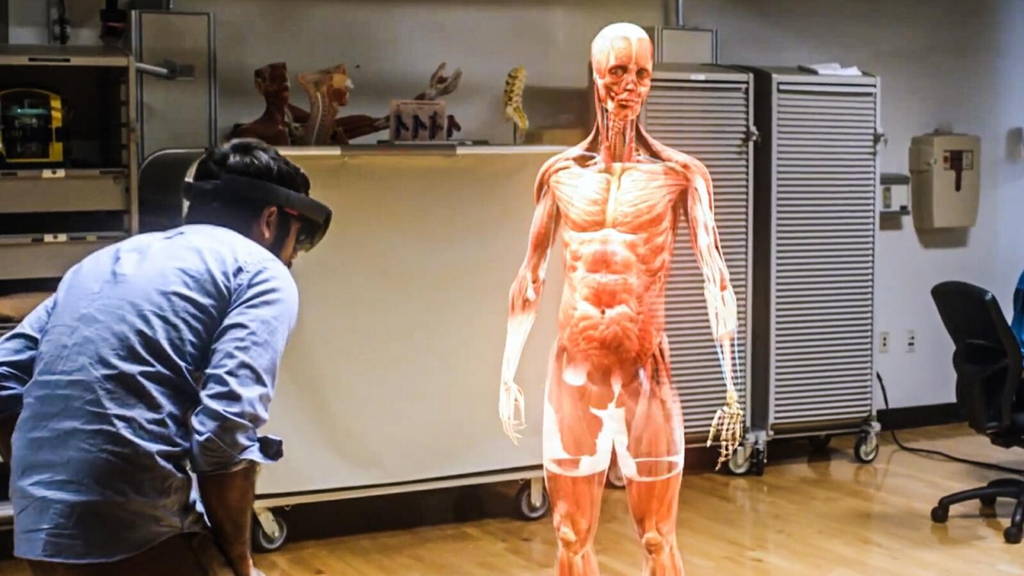It’s not the first time a VR/AR solution was used during surgery. Last April dr Shafi Ahmed, co-founder of virtual and augmented reality firm Medical Realities – cut off a tumour from the colon of a man in his 70’s. When Ahmed and his team removed the cancer, a 360-degree camera rig mounted over the operating table captured the doctors' every movement in 4K and livestreamed it globally in VR.
So augmented or virtual reality surgery is nothing new, but the HoloLens eliminates a large amount of the jittering and lag that simply wouldn't be acceptable during delicate operations. The virtual approach should not only be more accurate than conventional markers (the target is frequently too small or shifts around), but faster and simpler. For Microsoft, the project backs up its vision that medical world will embrace the HoloLens, writes Engadget.
The testing is still in its early stages. Duke has only used HoloLens on a model so far, and only with that one procedure. The University wants to prove the headset can work in real situations and different procedures before there's widespread adoption. However, Engadget believes, it's not hard to see HoloLens and other augmented reality gear becoming a mainstay in operating theaters. Surgeons could spend more time completing procedures and less time fretting that one slip might endanger a patient.
ABI Research estimates that more than 16 million wearables—from activity trackers to healthcare monitors and from 3D motion trackers to HMDs—will ship for business use this year. “There is significant market interest in the smart glasses segment for design, quality assurance, workflow optimization, and assistive applications,” says Jeff Orr, Research Director at ABI Research. “Initial HMD use cases are delivering new operational efficiencies and safety programs by enabling remote workers to access design and support personnel without major delays.”
“Wearables in the workforce are becoming more prominent, as they give workers immediate, direct access to important information, such as profiling health care records on a smart glass display,” says Stephanie Lawrence, Research Analyst at ABI Research. “This hands-free approach saves time, allowing staff to become more efficient and, ultimately, saving companies money.”
So augmented or virtual reality surgery is nothing new, but the HoloLens eliminates a large amount of the jittering and lag that simply wouldn't be acceptable during delicate operations. The virtual approach should not only be more accurate than conventional markers (the target is frequently too small or shifts around), but faster and simpler. For Microsoft, the project backs up its vision that medical world will embrace the HoloLens, writes Engadget.
The testing is still in its early stages. Duke has only used HoloLens on a model so far, and only with that one procedure. The University wants to prove the headset can work in real situations and different procedures before there's widespread adoption. However, Engadget believes, it's not hard to see HoloLens and other augmented reality gear becoming a mainstay in operating theaters. Surgeons could spend more time completing procedures and less time fretting that one slip might endanger a patient.
Momentum for HMD’s
Recently ABI research predicted that wearables will increase rapidly in variety and numbers in the workplace. Enterprises rely on them more and more to help bridge the communications gap between employees and systems, and foster better productivity. Wearable healthcare monitors are now the most popular form-factor and momentum is building for Head-Mounted Displays (HMDs) like the HoloLens, Google Glass, the Oculus Rift and the HTC Vive.ABI Research estimates that more than 16 million wearables—from activity trackers to healthcare monitors and from 3D motion trackers to HMDs—will ship for business use this year. “There is significant market interest in the smart glasses segment for design, quality assurance, workflow optimization, and assistive applications,” says Jeff Orr, Research Director at ABI Research. “Initial HMD use cases are delivering new operational efficiencies and safety programs by enabling remote workers to access design and support personnel without major delays.”
Handsfree work
Wearable devices in the workplace benefit employees by allowing them to use both hands to complete tasks without the need to hold a mobile device. Wearables are also addressing major gaps in employee productivity, enhancing voice and data communications between employees and systems. Some employers use them as a form of identity and authentication, as well.“Wearables in the workforce are becoming more prominent, as they give workers immediate, direct access to important information, such as profiling health care records on a smart glass display,” says Stephanie Lawrence, Research Analyst at ABI Research. “This hands-free approach saves time, allowing staff to become more efficient and, ultimately, saving companies money.”






